Motorola’s premium Edge phones don’t get a lot of attention, and it’s too bad, as they occupy an interesting sector of the flagship phone market. While they don’t offer the rock-bottom prices of the Moto G line, nor the folding flip-phone design of the Razr and Razr Plus, they keep the curved-edge screen design alive with functional specs and a clean build of Android.
Edge phones don’t have the name recognition of Samsung’s Galaxy phones nor Google’s Pixel line, but they do have a secret weapon: The phones frequently go on sale, at times dropping to nearly half off their original price. For instance, in the case of the Motorola Edge 2023, it’s dropping from its $600 list price to $350 this week.
Read more: Best Phone to Buy in 2024
I took it with me on two winter vacations where its sleek design, fast 68W charging and grippy vegan leather back all made it handy to carry with me. The phone’s camera take decent photos, especially compared to phones regularly priced $400 and under. The Motorola Edge is a good option for someone who’s looking for an all-around phone that’s “cheap” but doesn’t feel cheap.
The curved display and body
The Edge 2023’s premium feel starts with its 6.6-inch curved display, which reminds me of the Samsung Galaxy S6 Edge I used as my work phone. Most flagship Android phones have flat screens, but Motorola opted for a screen that rounds over the edge of the side. While this type of screen draws mixed opinions, I do enjoy that I can use the display edges to scroll through articles and texts without covering up anything on the flat portion of the screen. Motorola also lets you set up the display’s edge to light up for notifications when the phone is face down, which reminds me of the long-gone notification lights on BlackBerry phones.
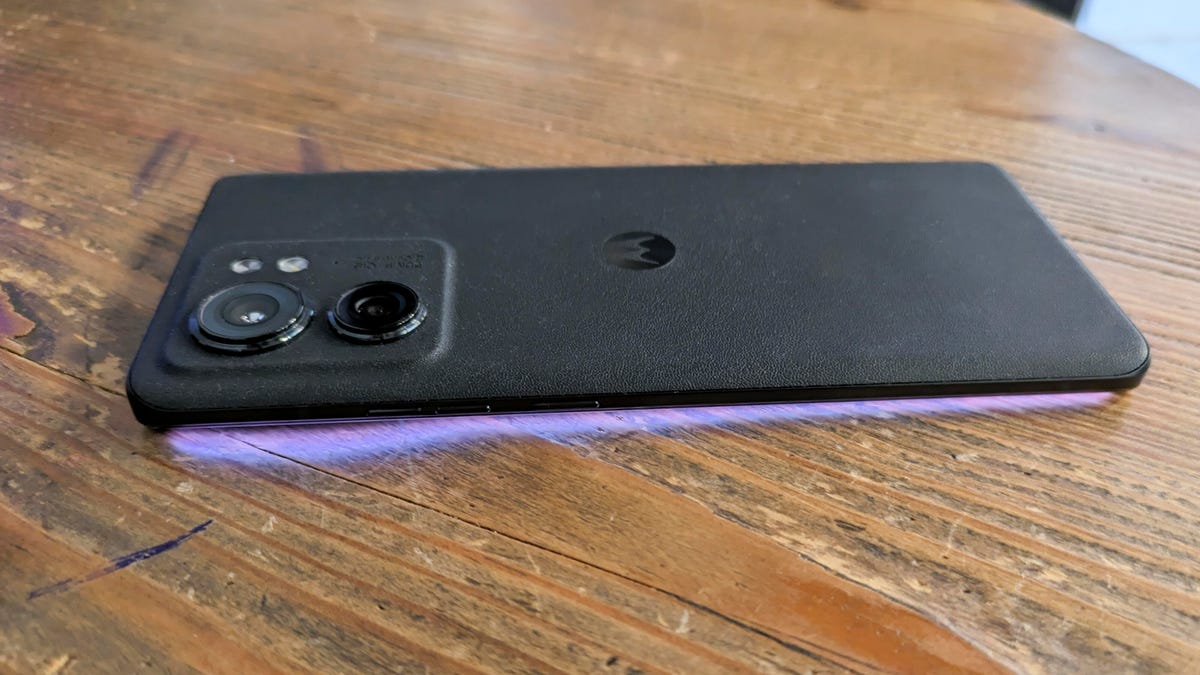
When face down, the Motorola Edge’s display can light up for notifications.
And while those throwback features are nice, Motorola also equips the Edge with a modern 144Hz refresh rate, making animations and scrolling look smooth. It’s close to what I see in gaming-focused phones. Its 360Hz touch sampling rate — how fast it responds to finger taps — is also nice for fast games like Dead Cells, even though this is not considered a gaming phone by any stretch. By comparison, the Asus ROG Phone 8 Pro’s touch sampling rate is double that at 720Hz, while the Edge exceeds the Samsung Galaxy S24’s 240Hz rate.
An important caveat to the Edge’s stylish design: I found a few scratches on the screen within days of carrying the phone in my pockets, and a more appeared throughout my travels. Nothing that a good screen protector can’t prevent, but get that installed before taking the phone everywhere you go.
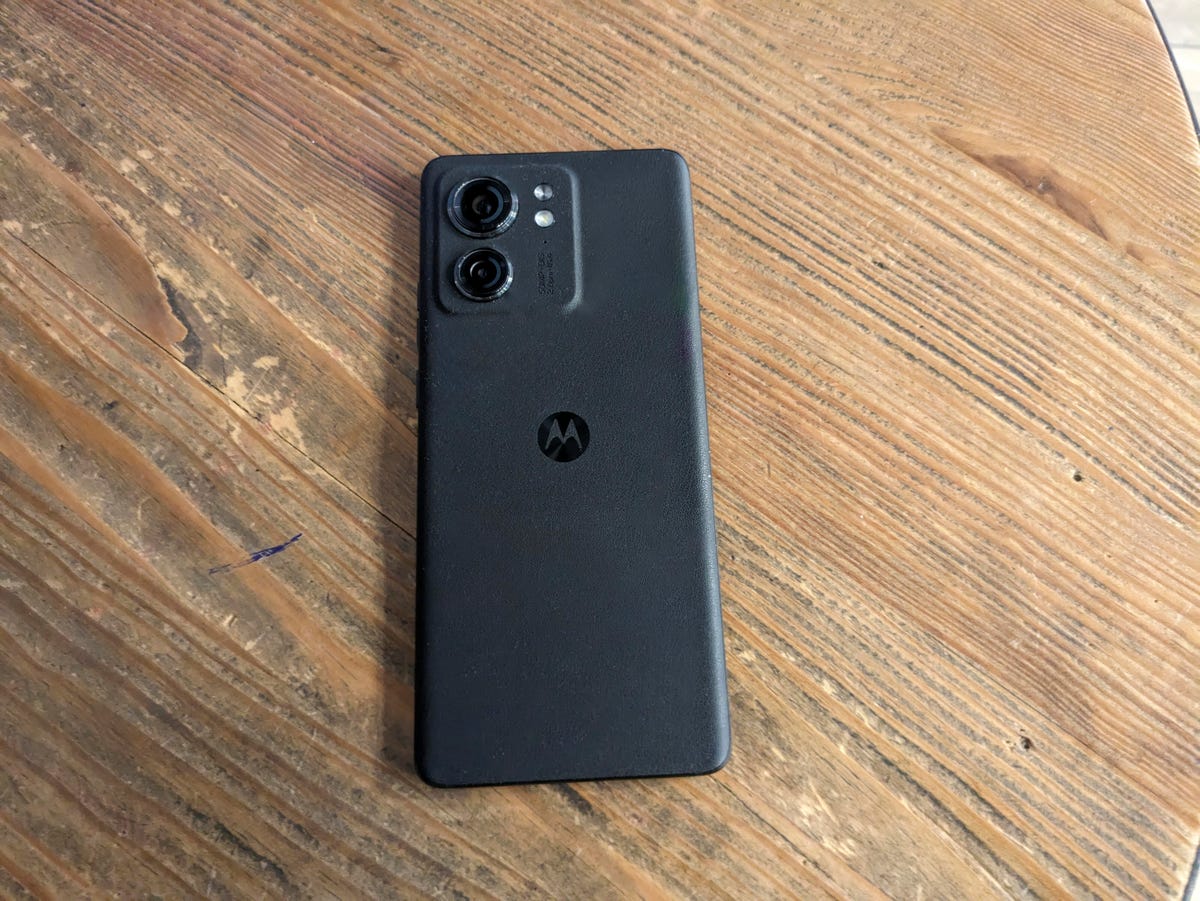
The vegan leather back of the Motorola Edge feels nice, and provides some character to the phone.
I am however mixed on whether I’d want to place the Edge in a case, mostly because the vegan leather back of the phone feels so nice. It smooths out the camera bump on the handset while providing a touch of character, distinguishing it in a phone industry otherwise dominated by metal or glass backsides. Motorola recently added this same casing to its cheaper Moto G line, and I’m all for more companies experimenting with how a phone feels in the hand alongside how it looks.
Adding to the Edge’s feel is its lightness, as its 168g weight is noticeably easier to carry than other similar size phones. For instance, the Samsung Galaxy S24 Plus weighs 197g despite having a nearly identical-size screen, and it’s also lighter than the Pixel 7A, which weighs 193g even though it has a smaller 6.1-inch display. This is another trend I’d love to see in more, because if phones keep getting bigger, making them lighter so they don’t weigh down pockets or handbags would be the next best way to improve how we carry them.
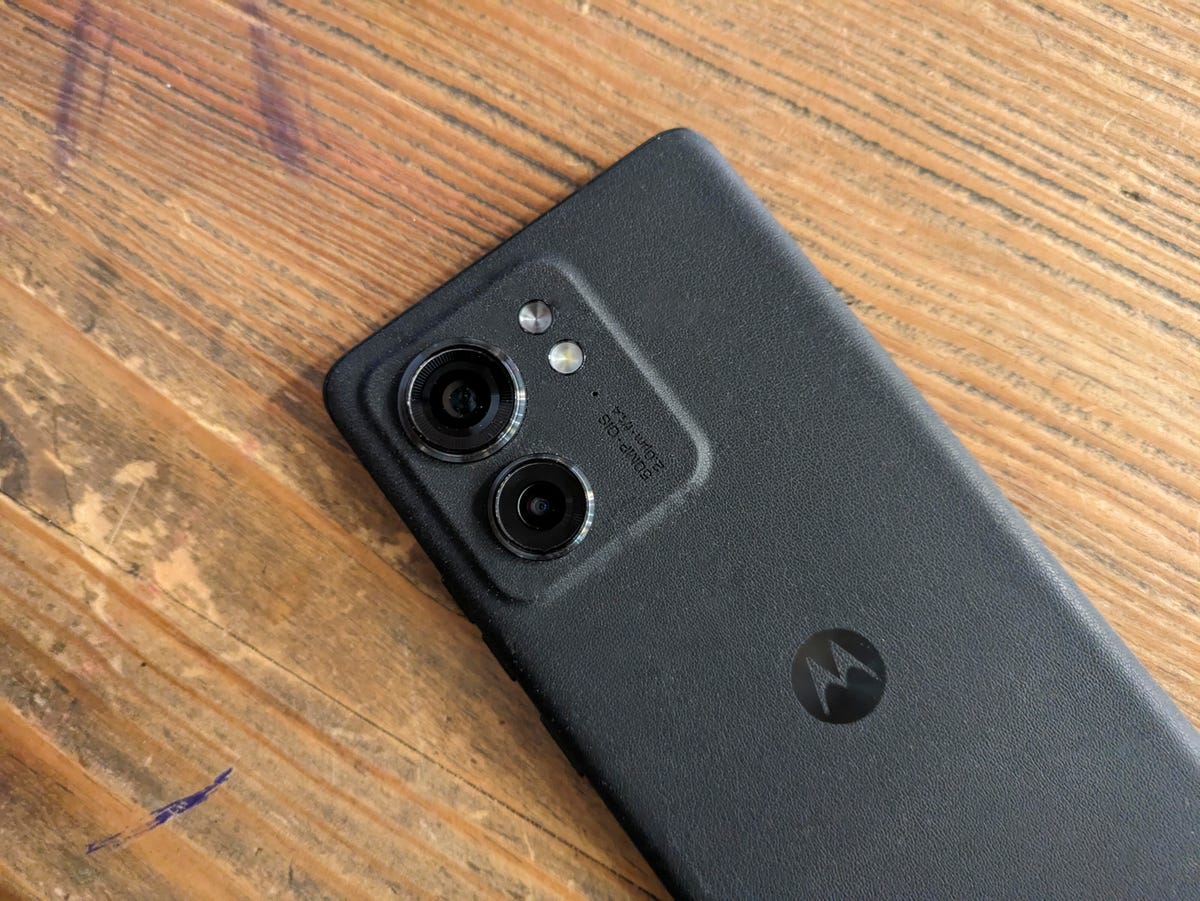
The Motorola Edge has a 50-megapixel main camera and a 13-megapixel ultrawide camera.
Scenic photography
The Motorola Edge is not the best camera that I’ve used among phones that start at $600, but its 50-megapixel main camera paired up with a 13-megapixel ultrawide is capable of capturing colorful scenes in bright and indoor environments.
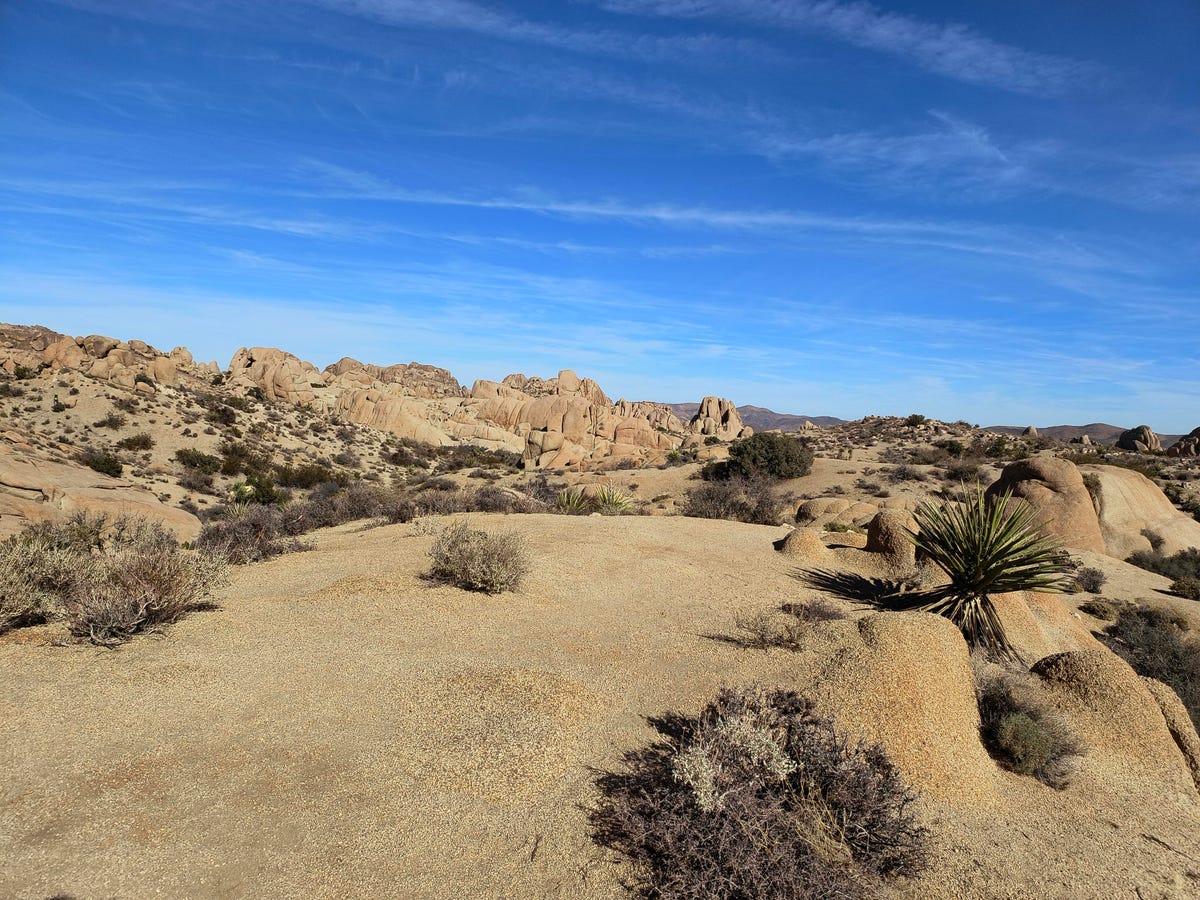
A hiking photo taken at the Joshua Tree National Park on the Motorola Edge.
During a California trip in December, I took the Motorola Edge to the deserts of the Joshua Tree National Park and seaside at Venice Beach. All of my photos show off the textures of the rocks and Joshua Tree plant life, along with the waves seen on a cloudy day in Venice Beach, respectively.
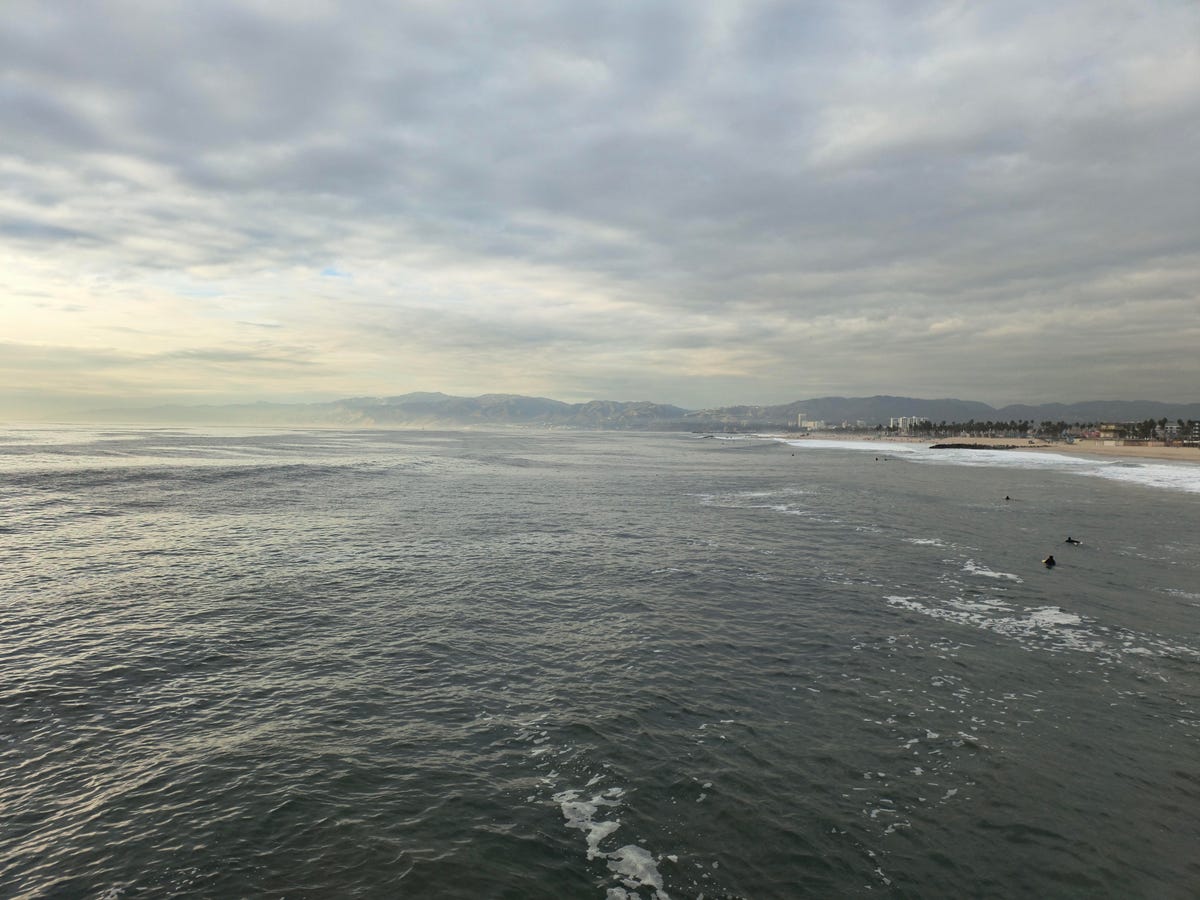
Venice Beach on a cloudy day, taken using the Motorola Edge.
And while I look rather tousled from the Venice Beach wind in this selfie taken with the 32-megapixel front-facing camera, the image captures details in my skin’s texture and strands of hair.

Self-taken photo using the Motorola Edge at Venice Beach.
Below is a photo I took during a nighttime walk at a Palm Springs street fair. Notice the faint details of dark palm trees in the background and how that contrasts with the crowds and various booths.
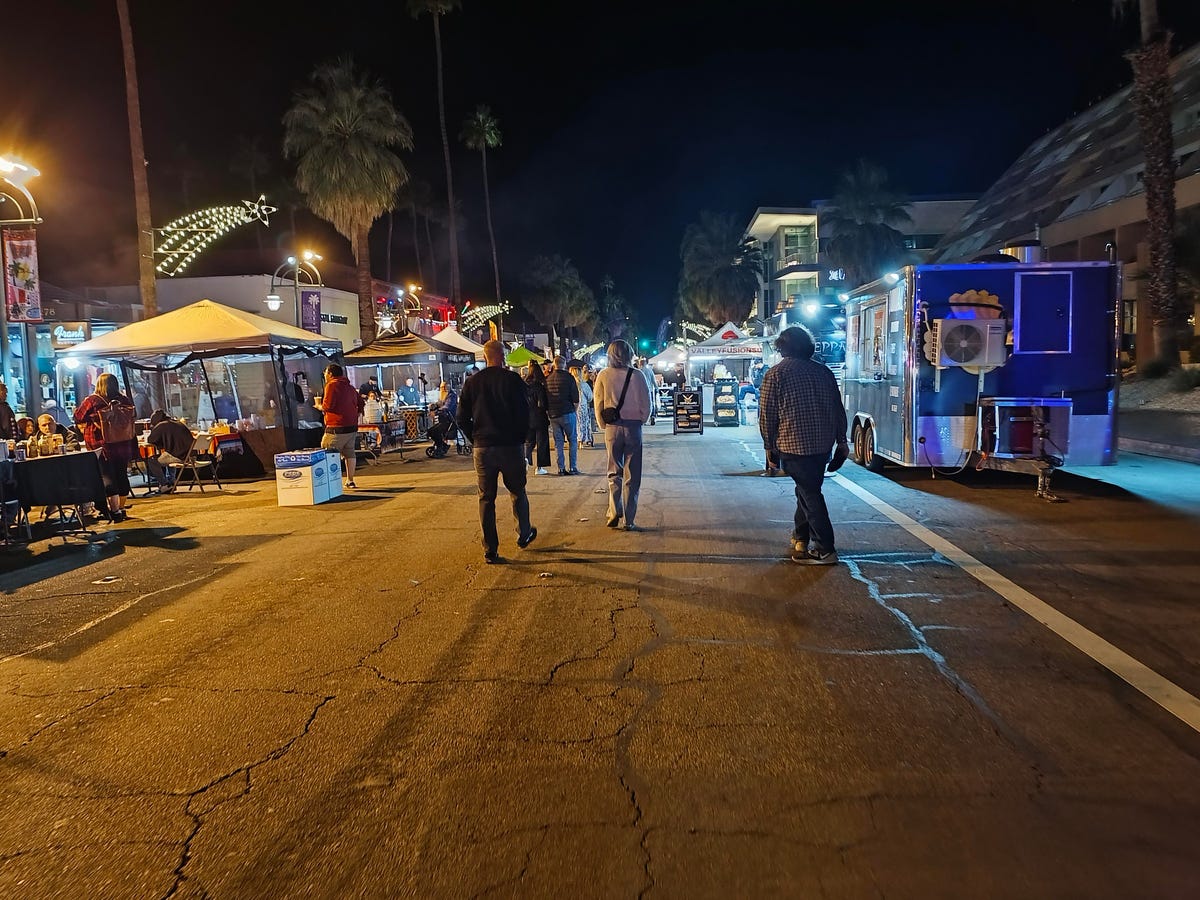
A nighttime street fair in Palm Springs, California, taken on the Motorola Edge.
However indoor photos taken in dim lighting appear to struggle. For instance, while the decorations inside of this photo of the Falcon Bar in Long Beach look clear, the bottom left of the photo has visible distortion in the shadows.

The Falcon Bar, taken on the Motorola Edge.
Seeing the Edge struggle in low-light reminds me a common nuisance found on other phones that are regularly $400 and less, where photos taken with night mode end up applying a lot of noise reduction blur.
Video quality is decent, with options to shoot at 4K and 30 frames per second or 1080p at 60fps. It’s not doing anything groundbreaking for a $600 phone, but can grab videos for sharing with friends or posting on social media. While Motorola touts the Edge’s video stabilization feature, the footage I recorded walking the Venice Beach pier still looked shaky. It’s viewable, but I wouldn’t put its stabilization feature anywhere near the level that Asus provides to its Zenfone line or on the Pixel 7A.
When taking into account the Edge’s original $600 price, I would sooner recommend the Pixel 7A or the Samsung Galaxy S23 FE for photography, but when considering it as a $350 phone, the Edge is quite a deal.
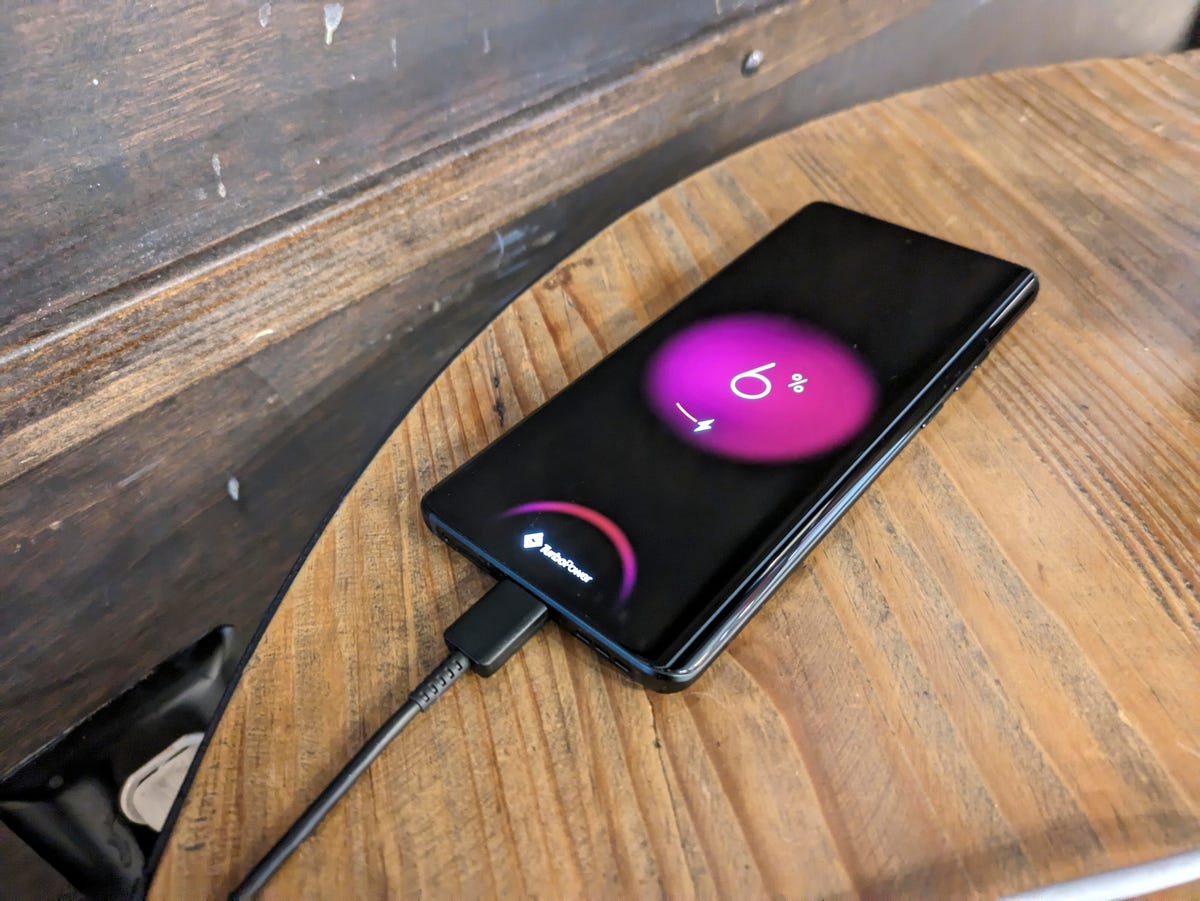
The Motorola Edge’s 68-watt wired charging is quite fast, and doesn’t require a special power adapter.
Fast charging, but not a powerful phone
The Motorola Edge’s 68-watt charging could be its best feature, even as we see new 2024 phones like the OnePlus 12R bring 80-watt charging speeds to phones that cost $600. That’s because while the OnePlus uses its own proprietary charger to achieve those speeds. Motorola’s 68-watt speeds work with nearly any compatible USB-C charger. During a 30-minute wired charging test, I was able to take the phone from 0% to 69%. The 15-watt wireless charging isn’t nearly as dramatic, but it’s nice to have an option that could took the phone from 21% to 45% during a 30-minute wireless charging test.
The Edge has a 4,400-mAh battery, that’s smaller than the 5,000 mAh I see in a lot of Android phones, but I easily got through a day of use on a single charge. In CNET’s YouTube streaming drain test — in which the phone’s battery is charged to 100% and I stream a video over Wi-Fi for 3 hours checking the battery every hour — the Edge depleted from 100% to 72%. That’s faster than the same test on the Galaxy S23 FE, which ran down to 77%, and the Pixel 7A which depleted to 85%. The FE has a bigger 4,500-mAh battery, while the 7A has a comparable 4,385-mAh battery.
YouTube streaming drain test
| Phone | 1 hr. | 2 hr. | 3 hr. |
|---|---|---|---|
| Motorola Edge (2023) | 90% | 81% | 72% |
| Google Pixel 7A | 96% | 90% | 85% |
| Samsung Galaxy S23 FE | 94% | 85% | 77% |
The Edge’s overall performance is a weak point compared to 2024 phones and other $600 phones released last year, and is more in line with $400 smartphones. In Geekbench 6 and 3DMark Wild Life Extreme benchmark tests, the Edge’s score was closer to the $400 Moto G Stylus 5G than it was to the Pixel 7A or the Galaxy S23 FE.
Benchmark testing: Motorola Edge (2023) vs. Google Pixel 7A vs. Samsung Galaxy S23 FE vs. Moto G Stylus 5G (2023)
| Phone | Geekbench 6.0 Single Core | Geekbench 6.0 Multi Core | 3DMark Wild Life Extreme |
|---|---|---|---|
| Motorola Edge (2023) | 1,019 | 2,289 | 696; 4.17 fps |
| Google Pixel 7A | 1,439 | 3,560 | 1,855; FPS did not show |
| Samsung Galaxy S23 FE | 1,620 | 3,982 | 2,588; 15.50 fps |
| Moto G Stylus 5G (2023) | 714 | 2,497 | 609; 3.7 fps |
That might be due to the phone running on a MediaTek Dimensity 7030, as opposed to the 7A’s Tensor G2 or the S23 FE’s Qualcomm Snapdragon 8 Gen 1 chip. I didn’t notice particularly slow performance when it came to using apps or multitasking, and perhaps this is an area that inadvertently helps the Edge achieve a decent battery life.
Even though I referenced how gamer-friendly the Edge’s display was earlier, I would avoid cranking up all of the performance settings available in some Android games.
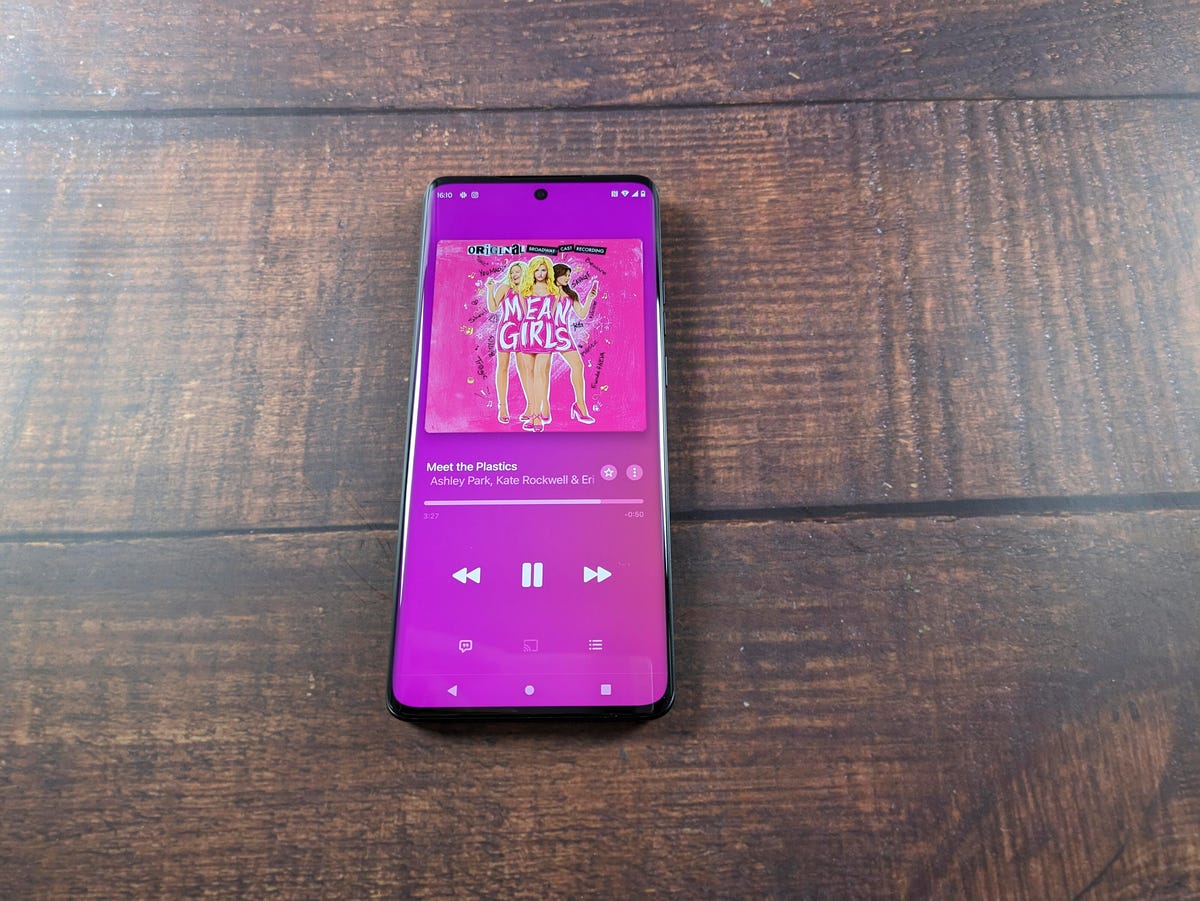
The Motorola Edge has dual speakers with Dolby Atmos support.
Motorola Edge might be just enough phone, but has competition
Last year’s Motorola Edge has a lot to offer, as long as it happens to be on sale at $350 or $400. When it is, you have a phone with a sleek and light design, decent cameras, fast charging and enough performance to get through most tasks without a hiccup. The Edge just received an update from Android 13 to Android 14, and should receive Android 15. It will also get security updates through Sept. 2026.
These software timelines are short compared to the Galaxy S23 FE’s four years of software updates and five years of security updates.
However there’s a lot of competition among Android phones between $300 and $600. For instance, the Pixel 7A is also on sale this week, discounted from $499 to $374. Meanwhile Google I/O is coming in May, where we will likely see the debut of the Pixel 8A — which could come with an even deeper price cut for the Pixel 7A. And while Samsung isn’t bringing the Galaxy A55 to the US this year — which traditionally hits the $450 price — the company is instead bringing the $300 Galaxy A25 stateside. That latter move makes some sense, as Samsung’s $200 A series phones often break into US sales charts that are otherwise dominated by Apple’s iPhone.
But that might be exactly why the Motorola Edge is a compelling deal when it’s available for $350 or $400. At this discount, you have a phone that includes a lot of comparable features to other $600 phones, alongside a few compromises that are more forgivable at the lower sale price.
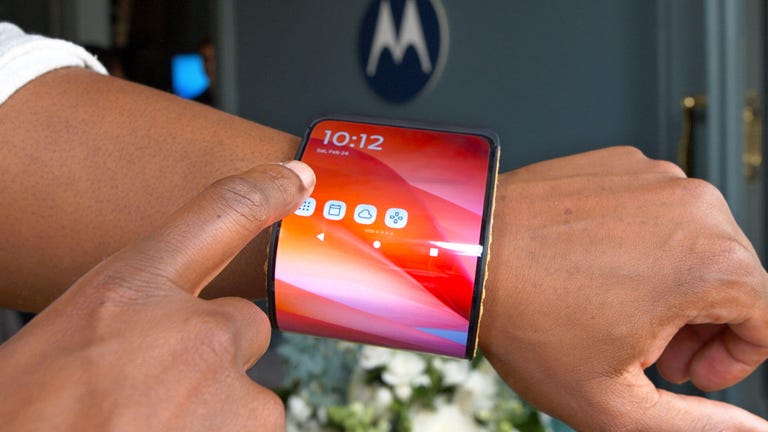
Watch this: Motorola’s Rollable Concept Phone Wraps on Your Wrist
Motorla Edge (2023) vs. Google Pixel 7A, Samsung Galaxy S23 FE, Moto G Stylus 5G (2023)
| Motorola Edge (2023) | Google Pixel 7A | Samsung Galaxy S23 FE | Moto G Stylus 5G (2023) | |
|---|---|---|---|---|
| Display size, resolution | 6.6-inch OLED; 2,400×1,080 pixels; 144Hz refresh rate | 6.1-inch OLED; 2,400×1,080 pixels; 60/90Hz | 6.4-inch AMOLED display; 2,340 x 1,080 pixels; adaptive 120Hz refresh rate (60-120Hz) | 6.6-inch LCD display; 2,400×1,080 pixels; 120Hz refresh rate |
| Pixel density | 402 ppi | 361 ppi | 466 ppi | 399 ppi |
| Dimensions (inches) | 6.2 x 2.8 x 0.3 in. | 6.00 x 2.87 x 0.35 in. | 6.22 x 3.01 x 0.32 in. | 6.41 x 2.9 x 0.37 in. |
| Dimensions (millimeters) | 158.5 x 72 x 7.6 mm | 73 x 152 x 9.0 mm | 157.9 x 76.4 x 8.1 mm | 162.8 x 73.8 x 9.3 mm |
| Weight (ounces, grams) | 168 g (5.9 oz.) | 193g (6.81 oz.) | 209 g (7.4 oz.) | 202 g (7.13 oz.) |
| Mobile software | Android 13 | Android 13 | Android 13 | Android 13 |
| Camera | 50-megapixel (main), 13-megapixel (ultrawide) | 64-megapixel (main), 13-megapixel (ultrawide) | 50-megapixel (main), 12-megapixel (ultrawide), 8-megapixel (telephoto) | 50-megapixel (main), 8-megapixel (ultrawide) |
| Front-facing camera | 32-megapixel | 13-megapixel | 10-megapixel | 16-megapixel |
| Video capture | 4K | 4K | 8K | 4K |
| Processor | MediaTek Dimensity 7030 | Tensor G2 | Snapdragon 8 Gen 1 | Snapdragon 6 Gen 1 |
| RAM + Storage | 8GB + 256GB | 8GB + 128GB | 8GB + 128GB, 256GB | 4GB RAM + 128GB; 6GB RAM + 128GB; 6GB RAM + 256GB |
| Expandable storage | None | None | None | Yes |
| Battery | 4,400 mAh | 4,385 mAh | 4,500 mAh | 5,000 mAh |
| Fingerprint sensor | Under display | Side | Under display | Side |
| Connector | USB-C | USB-C | USB-C | USB-C |
| Headphone jack | None | None | None | Yes |
| Special features | 5G, Moto Gestures, HDR10+, Dolby Atmos, NFC | 5G (5G sub6 / mmWave), IP67 rating, 18W fast charging, 7.5W wireless charging | Wireless PowerShare, Fast Wireless Charging 2.0, Samsung Knox with Samsung Knox Vault, IP68 water resistance | Stylus, Moto Gestures, stereo speakers |
| Price off-contract (USD) | $600 (256GB) | $499 (128GB), $549 (128GB + mmW) | $600 (128GB) | $400 (128GB) |
| Price (GBP) | N/A | £449 (128GB) | £599 (128GB) | Converts to £317 (128GB) |
| Price (AUD) | N/A | AU$749 (128GB) | AU$1,099 (128GB) | Converts to AU$590 (128GB) |





















+ There are no comments
Add yours